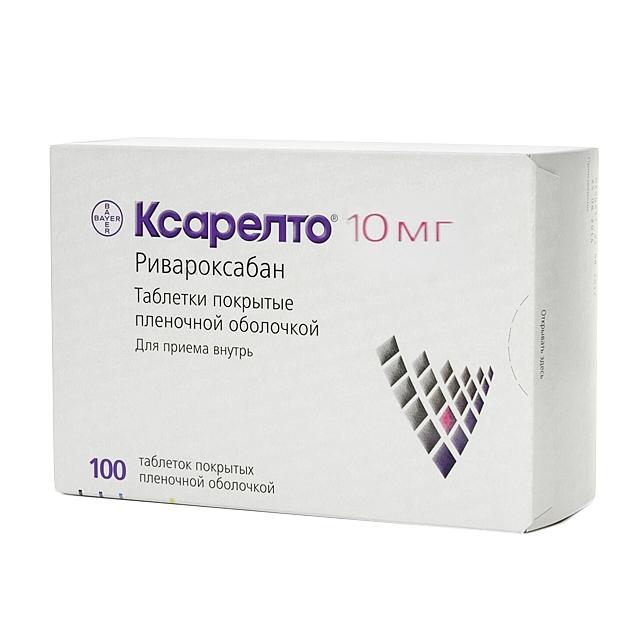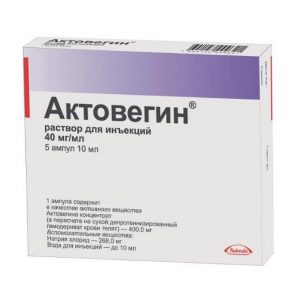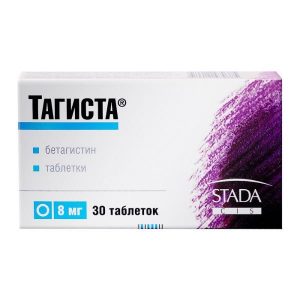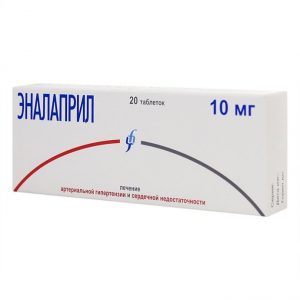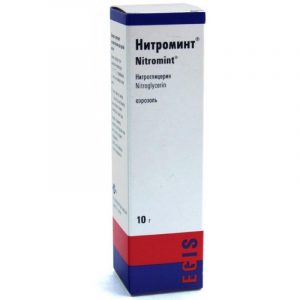Description
Latin name
XARELTO
Release form
Xarelto. Coated tablets.
Packing
100 pcs.
Indications
Prevention of venous thromboembolism (VTE) in patients undergoing major orthopedic surgery on the lower extremities.
Contraindications
Clinically significant active bleeding, for example: Intracranial bleeding.
Gastrointestinal bleeding.
Diseases of the liver that occur with coagulopathy, which causes a clinically significant risk of bleeding.
Pregnancy.
Lactation (lactation).
Children and adolescents under 18 years of age (efficacy and safety for patients of this age group have not been established).
Hypersensitivity to rivaroxaban or any excipients contained in the tablet.
Clinical data on the use of rivaroxaban in patients with severe renal failure (CC <15 ml / min) are not available. Therefore, the use of rivaroxaban is not recommended for this category of patients. Congenital lactase deficiency, lactose intolerance, glucose-galactose malabsorption (due to the presence of lactose in the composition). Caution: In the treatment of patients with an increased risk of bleeding, including: With congenital or acquired tendency to bleed. Uncontrolled severe hypertension. Peptic ulcer of the stomach and duodenum in the acute stage. Recently suffered gastric and duodenal ulcer. Vascular retinopathy. Recently experienced intracranial or intracerebral hemorrhage. With pathology of the vessels of the spinal cord or brain. Following recent surgery on the brain, spinal cord, or eyes. With a history of bronchiectasis or pulmonary hemorrhage. In the treatment of patients with moderate renal insufficiency (CC <50-30 ml / min), receiving simultaneously drugs that increase the concentration of rivaroxaban in blood plasma. Caution should be exercised in the treatment of patients with severe renal insufficiency (CC <30-15 ml / min), since the concentration of rivaroxaban in the blood plasma of such patients can increase significantly (1.6 times on average) and therefore (also due to the underlying disease ), such patients are at increased risk of both bleeding and thrombosis. In the treatment of patients receiving drugs that affect hemostasis (eg, NSAIDs, antiplatelet agents, or other antithrombotic agents). Rivaroxaban is not recommended for use in patients receiving systemic treatment with antifungal drugs of the azole group (e.g., ketoconazole) or HIV protease inhibitors (e.g., ritonavir). These drugs are potent inhibitors of the CYP3A4 isoenzyme and P-glycoprotein. As a result, these drugs can increase the plasma concentration of rivaroxaban to a clinically significant level (2.6 times on average), which increases the risk of bleeding. Fluconazole (an antifungal drug of the azole group), a moderate inhibitor of CYP3A4, has a less pronounced effect on the excretion of rivaroxaban and can be used with it at the same time. Patients with severe renal failure or an increased risk of bleeding and patients receiving concomitant systemic treatment with azole antifungal drugs or HIV protease inhibitors should be closely monitored to initiate timely detection of bleeding complications. Such control may include regular physical examination of patients, close monitoring of the surgical wound drainage and periodic measurements of hemoglobin levels. Any decrease in hemoglobin or blood pressure, for which there is no explanation, is the basis for finding a place for bleeding. In patients at risk of exacerbation of gastric ulcer and duodenal ulcer, prophylactic anti-ulcer treatment may be warranted. Use during pregnancy and lactation Pregnancy There are no data on the use of rivaroxaban in pregnant women. Data from experimental animals showed pronounced toxicity of rivaroxaban to the maternal organism, associated with the pharmacological action of the drug (for example, complications in the form of hemorrhages) and leading to reproductive toxicity. Due to the possible risk of bleeding and the ability to cross the placenta, rivaroxaban is contraindicated in pregnancy. Women with preserved reproductive ability should use effective methods of contraception during treatment with rivaroxaban. Lactation There are no data on the use of rivaroxaban for the treatment of women during lactation. Data from experimental animals show that rivaroxaban is excreted in breast milk. Rivaroxaban can be used only after the abolition of breastfeeding. Composition 1 tablet contains: micronized rivaroxaban 10 mg. Excipients: microcrystalline cellulose, croscarmellose sodium, hypromellose, lactose monohydrate, magnesium stearate, sodium lauryl sulfate. Shell composition: dye iron oxide red, hypromellose 15cP, macrogol 3350, titanium dioxide. Dosage and administration of For the prevention of VTE in large orthopedic operations It is recommended to prescribe 1 tablet (10 mg) 1 time / day. Duration of treatment: 5 weeks after major surgery on the hip joint 2 weeks after major surgery on the knee joint. Rivaroxaban can be taken with or without food. The initial dose should be taken 6-10 hours after surgery, provided hemostasis is achieved. If a dose is missed, the patient should take rivaroxaban immediately and continue treatment the next day with 1 tablet / day, as before. Transfer of patients from vitamin K antagonists (AVKs) to Xarelto With MHO? 3 AVC treatment should be discontinued and treatment of Xarelto should be initiated. When transferring patients from AVK to Xarelto, after taking Xarelto, the MHO values will falsely increase. In this regard, the MHO indicator cannot be used to control the anticoagulant effect of Xarelto. Transition from Xarelto to vitamin K antagonists (AVKs) There is a likelihood of insufficient anticoagulant effect when transferring patients from Xarelto to AVKs. In the transition period associated with the transfer to another anticoagulant drug, it is necessary to ensure a continuous and sufficient anticoagulant effect. It should be borne in mind that Xarelto may contribute to an increase in MHO. When transferring a patient from Xarelto to AVK, should both drugs be given at the same time until the MHO reaches the value? 2. In the first two days of the transition period, a standard dose of AVK should be used, and subsequently be guided by the MHO value. During the period of joint administration of Xarelto and AVK MHO should be determined no earlier than 24 hours (after the previous, but before the next dose of Xarelto). After the cancellation of Xarelto, the determination of MHO with a sufficient degree of reliability is possible 24 hours after taking the last dose of the drug. Transition from parenteral anticoagulants to Xarelto When transferring a patient from parenteral anticoagulants to Xarelto, Xarelto should be started 0-2 hours before the expected dose of the parenteral drug (for example, low molecular weight heparin) or during cancellation of a long-term parental drug (e.g. in / in the introduction of unfractionated heparin). Switching from Xarelto to parenteral anticoagulants You should stop taking Xarelto and administer the first dose of parenteral anticoagulant at the time you need to take the next dose of Xarelto. Use in individual patient groups Dose adjustment is not required depending on the patient’s age (over 65 years), gender, body weight or ethnicity. In liver disease Rivaroxaban is contraindicated in patients with liver disease accompanied by coagulopathy, which causes a clinically significant risk of bleeding. Dose changes are not required for patients with other liver diseases. The limited clinical data obtained in patients with moderate hepatic insufficiency (class B on the Child-Pugh scale) indicate a significant increase in the pharmacological activity of the drug. For patients with severe hepatic impairment (Child-Pugh class C), clinical data are not available. When prescribing rivaroxaban to patients with renal failure of mild (CC 80-50 ml / min) or moderate (CC <50-30 ml / min) severity dose reduction is not required. In case of kidney disease The limited clinical data available in patients with severe renal failure (CC <30-15 ml / min) show a significant increase in rivaroxaban concentrations in these patients. To treat this category of patients, rivaroxaban should be used with caution. Use of rivaroxaban is not recommended in patients with CC <15 ml / min. Side effects Xarelto safety 10 mg was evaluated in four phase III studies in 6097 patients, who underwent major orthopedic surgery on the lower extremities (total prosthetics of the knee or hip joint) and received Xarelto treatment lasting up to 39 days, as well as in two phase III trials for the treatment of venous thromboembolism, including 2194 patients who received either 15 mg of Xarelto 2 times / day daily for 3 weeks, followed by a dose of 20 mg 1 time / day, or 20 mg 1 time / day with a treatment duration of up to 21 months. In addition, safety data for patients with non-valvular atrial fibrillation were obtained from two phase III trials involving 7750 patients who received at least one Xarelto dose. Given the mechanism of action, the use of Xarelto may be accompanied by an increased risk of latent or overt bleeding from any organs and tissues, which can lead to posthemorrhagic anemia. The risk of bleeding may increase in patients with uncontrolled arterial hypertension and / or when used together with drugs that affect hemostasis. Signs, symptoms, and severity (including death) vary depending on the location, intensity, or duration of bleeding and / or anemia. Hemorrhagic complications can be manifested by weakness, pallor, dizziness, headache, shortness of breath, as well as an increase in limb in volume or shock, which cannot be explained by other reasons. In some cases, symptoms of myocardial ischemia, such as chest pain and angina, have been observed due to anemia. When taking Xarelto, there were reported known complications secondary to severe bleeding, such as interfascial syndrome and renal failure. Therefore, when assessing the condition of a patient receiving anticoagulants, the possibility of hemorrhage should be considered. Adverse reactions are classified by frequency of occurrence and organ systems and should be interpreted taking into account the surgical situation. From the hemopoietic system: often anemia (including appropriate laboratory parameters), infrequently – thrombocythemia (including high platelet count). From the cardiovascular system: infrequently – tachycardia, arterial hypotension (including lowering blood pressure, hypotension during the procedure). From the digestive system: often – nausea, increased activity of GGT, transaminases (including ALT, ACT). Infrequently – constipation, diarrhea, abdominal pain (including pain in the upper abdomen, discomfort in the stomach), dyspepsia (including discomfort in the epigastrium), dry mouth, vomiting, increased activity of lipase, amylase, LDH, alkaline phosphatase, increased bilirubin concentration. Rarely – impaired liver function, increased concentration of conjugated bilirubin (with a concomitant increase in ALT activity or without it). From the side of the central nervous system: infrequently – dizziness, headache, short-term loss of consciousness (including syncope). From the urinary system: infrequently – renal failure (including increased creatinine concentration, increased urea concentration). From the blood coagulation system: often – hemorrhages after the procedures (including postoperative anemia and bleeding from the wound). Infrequently – hemorrhage (including hematoma and rare cases of muscle hemorrhage), gastrointestinal bleeding (including bleeding from the gums, rectum, bloody vomiting), hematuria (including microhematuria), genital tract hemorrhage (including menorrhagia), nosebleeds. On the part of the body as a whole: infrequently – local edema, poor health (including fatigue, general weakness), fever, peripheral edema. Allergic reactions: infrequently – itching (including rare cases of generalized itching), rash, urticaria (including rare cases of generalized urticaria). Rarely – allergic dermatitis. Other: infrequently – post-traumatic hematomas, discharge from the wound, pain in the limbs. In other clinical studies of rivaroxaban , individual cases of hemorrhage in the adrenal gland and conjunctiva have been described, and also bleeding from a gastrointestinal ulcer with a fatal outcome. In rare cases, jaundice and hypersensitivity have been reported. Infrequently – hemoptysis. Single intracranial bleeding has been described, especially in patients with arterial hypertension and / or taking concomitant antihemostatic drugs, which in rare cases can be potentially life-threatening. Drug Interaction Pharmacokinetic Interactions Elimination of rivaroxaban is mainly via metabolism in the liver mediated by the cytochrome P450 system (CYP3A4, CYP2J2), and also by renal excretion of unchanged drug using P-gp / Bcrp (P-glycoprotein / breast cancer resistance) transport systems. Rivaroxaban does not inhibit or induce the CYP3A4 isoenzyme and other important cytochrome isoforms. Concomitant administration of Xarelto ® and potent CYP3A4 and P-glycoprotein isoenzyme inhibitors can reduce the renal and hepatic clearance of rivaroxaban and thus significantly increase its systemic effect. The combined use of Xarelto ® and the azole antifungal agent ketoconazole (400 mg once daily), a potent inhibitor of CYP3A4 and P-glycoprotein, resulted in a 2.6-fold increase in the mean equilibrium AUC of rivaroxaban and a 1.7-fold increase in mean Cmax , which was accompanied by a significant increase in the pharmacodynamic action of the drug. The joint administration of Xarelto ® and the protease inhibitor of HIV ritonavir (600 mg twice daily), a potent inhibitor of CYP3A4 and P-glycoprotein, resulted in a 2.5-fold increase in the mean equilibrium AUC of rivaroxaban 1.6 times and an increase in the mean Cmax by a factor of 1.6. , which was accompanied by a significant increase in the pharmacodynamic action of the drug. In this regard, Xarelto ® is not recommended for use in patients receiving systemic treatment with azole group antifungal drugs or HIV protease inhibitors (see section Caution ). Clarithromycin (500 mg 2 times a day), a potent CYP3A4 isoenzyme inhibitor and moderate P-glycoprotein inhibitor, caused a 1.5-fold increase in AUC values and 1.4-fold rivaroxaban C max. This increase is of the order of normal variability of AUC and Cmax and is considered clinically insignificant. Erythromycin (500 mg 3 times daily), a moderate CYP3A4 and P-glycoprotein isoenzyme inhibitor, caused a 1.3-fold increase in rivaroxaban AUC and Cmax values. This increase is of the order of normal variability of AUC and Cmax and is considered clinically insignificant. Fluconazole (400 mg once daily), a moderate CYP3A4 isoenzyme inhibitor, caused a 1.4-fold increase in rivaroxaban average AUC and a 1.3-fold increase in mean Cmax. This increase is of the order of normal variability of AUC and Cmax and is considered clinically insignificant. Co-administration of Xarelto ® and rifampicin, a potent inducer of CYP3A4 and P-glycoprotein, led to a decrease in the average AUC of rivaroxaban by approximately 50% and a parallel decrease in its pharmacodynamic effects. Co-administration of rivaroxaban with other potent CYP3A4 inducers (eg, phenytoin, carbamazepine, phenobarbital, or perforated hypertension) may also lead to decreased plasma concentrations of rivaroxaban. Reduction of plasma concentrations of rivaroxaban is considered clinically insignificant. Strong CYP3A4 inducers should be used with caution. Pharmacodynamic Interactions Following the concomitant use of sodium enoxaparin (40 mg single dose) and Xarelto ® (10 mg single dose), a summation effect was observed with respect to the anti-factor Xa activity. not accompanied by additional summation effects on blood coagulation samples (prothrombin time, APTT). Enoxaparin sodium did not alter the pharmacokinetics of rivaroxaban (see section with caution). No pharmacokinetic interaction was found between Xarelto ® (15 mg) and clopidogrel (loading dose 300 mg followed by maintenance dose 75 mg), but no significant increase in bleeding time was observed in the subgroup of patients, which was not correlated with the degree of aggregation and thrombocyte aggregation GPIIb / IIIa receptor (see section “Caution”). No clinically significant increase in bleeding time was observed after the combined use of Xarelto (15 mg) and naproxen at a dose of 500 mg. However, individuals may have a more pronounced pharmacodynamic response. The transition of patients from warfarin (MNO 2.0 to 3.0) to Xarelto ® (20 mg) increased prothrombin time / MNO (Neoplastin) to a greater extent than would be expected with a simple summation of effects (individual MNO values may 12), while the effect on APTT, inhibition of factor Xa activity, and endogenous thrombin potential were additive. When investigating the pharmacodynamic effects of Xarelto ® during a transient period, the determination of anti-Xa, PiCT, and HepTest ® activity may be used as necessary tests that are not affected by warfarin. From day 4 after discontinuation of warfarin, all test results (including PV, APTV, inhibition of factor Xa activity and CRT (endogenous thrombin potential)) reflect only the effect of Xarelto ® (see section Method of administration and dose). No pharmacokinetic interactions have been reported between warfarin and Xarelto ®. Incompatibility Unknown. Effects on laboratory parameters Xarelto ® has an effect on blood coagulation (PV, APTV, HepTest ®) due to its mechanism of action. Overdose Symptoms: Rare cases of overdose with up to 600 mg of rivaroxaban have been reported without bleeding or other adverse reactions. Due to the limited absorption, the effect of saturation is expected without further increasing the mean plasma rivaroxaban content at hypertensive doses of 50 mg or higher. Treatment: The specific antidote for rivaroxaban is unknown. In case of overdose, activated charcoal can be used to reduce the absorption of rivaroxaban. Given the intense binding to blood plasma proteins, it is expected that rivaroxaban will not be excreted during dialysis. Treatment of bleeding: if bleeding occurs, the following actions can be taken to eliminate bleeding: later appointment of the next dose of rivaroxaban or withdrawal of treatment, depending on the situation. T 1/2 of rivaroxaban leaves approximately 5-13 hours. Appropriate symptomatic treatment, such as mechanical compression (eg, in case of severe nasal bleeding), surgery, fluid replenishment, and hemodynamic support, transfusion of blood or blood components should be considered. If the above measures do not lead to the elimination of bleeding, one of the following procoagulants listed below may be prescribed: Concentrate of the activated prothrombin complex (APCC). Prothrombin complex concentrate (PCC). Recombinant Vila Factor (rf Vila). However, there is no experience with the use of these products in the treatment of patients receiving rivaroxaban so far. Expected that protamine sulfate and vitamin K will not have any effect on the anti-clotting activity of rivaroxaban. There is no scientific justification for the feasibility or experience of using systemic hemostatic agents (eg, desmopressin, aprotinin, tranexamic acid, aminocaproic acid) for the elimination of rivaroxaban overdose. Storage conditions Store at a temperature not exceeding 30 ° C. Expiration 3 years. D Active ingredient Rivaroxaban dosage form dosage form tablets
